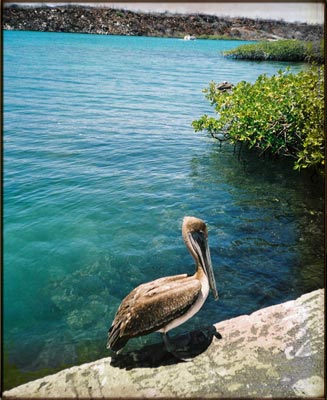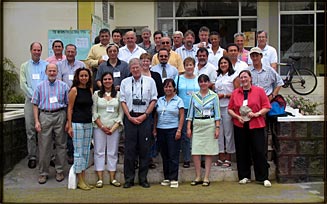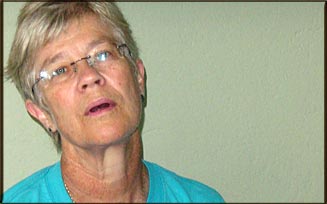
|

September
16, 2004
Some of the themes of this workshop have been playing out
in the experiences of the attendees. For instance, El Niño
and its opposite climate twin, La Niña, are driven by either
warm or cold water in the Pacific. I experienced my own El
Niño and La Niña events every morning when I took a
shower. When I stepped in, the water was either very cool
(La Niña) or uncomfortably warm (El Niño). The shower
would cycle between the two temperature states with unpredictable
timing, so I was unable to forecast when each would appear.
If it had been one or the other, I could have adjusted my
expectations. The fact that it flipped with no warning made
for some very uncomfortable showers.
Another
theme of the meeting was the notion of vulnerability and resilience.
A country or an ecosystem that is considered resilient can
absorb the “climate shock” of an El Niño
or La Niña event and return to normal after it passes. Areas
considered “vulnerable” can take years to recover
from extreme weather events, either because they lack economic
resources or robust ecosystems, or both. There was considerable
discussion about the notion of vulnerability in the sessions,
which seemed to imply that being called vulnerable was a bit
shameful, as if the strong were somehow blaming the weak for
their condition. One of the South American participants said
that Spanish speakers don’t understand the term unless
it has a last name, for example “vulnerable to drought.”
As if
to drive the point home, we had a minor health crisis during
the workshop when many of us succumbed to an intestinal bug
or flu (myself included). By the third day, half the people
were sick, even those from Ecuador and the Galapagos, and
it didn’t seemed tied to what or where we ate. The seemingly
random nature of who got sick and who didn’t left us
all wondering about the nature of vulnerability and resistance.
In the end, we all recovered, so in a sense we all have the
potential for resilience.
Climate
disturbances, like exposure to harmful microbes, are a fact
of life. How we respond to them depends in part on our circumstances,
but circumstances can be changed with foresight, knowledge,
and effort. Building resilience goes beyond forecasts and
early warning systems for El Niño and towards what
NCAR workshop organizer Mickey Glantz calls “El Niño
knowledge,” the collective experience and understanding
of scientists, community leaders, and everyday folks. “We
want to be moving toward 'El Niño knowledge' and away
from a sole focus on waiting for
a
specific forecast,”
Glantz writes in an e-mail. “Society can reduce its
vulnerability as well as increase its resilience if the people
take advantage of all they know about El Niño, La Niña,
climate variability, and extreme events that they have had
to cope with in their regions and in the past.”
|



